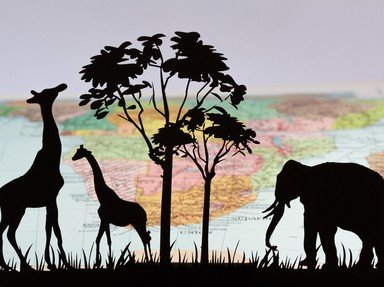Quiz Answer Key and Fun Facts
1. Zero
Snakes have zero legs of course, but do they have a backbone (spine)?
2. One
Given the animal kingdom has a propensity for bilateral symmetry, a one eyed creature would seem impossible but some copepods have a single medial eye. What type of creature is a copepod?
3. Two
Ever wonder why it was "Nemo and Marlin" not "Nemo and Melinda"? Some animals have both male and female sex organs. Some animals can change from male sex to female sex. Which animal from the options below displays this trait?
4. Three
Three, being odd, is an unusual number in the animal kingdom. However one well known animal has three hearts. Which one is it, from the list below?
5. Four
A ruminant is an animal that is reputed to have four stomachs but it really has only one but divided into four compartments, necessary to digest the cellulose in grass based diets. Which one of the following animals is not a ruminant?
6. Five
No animal has five legs. Is that so? Which one of the following animals could be considered to have a fifth leg?
7. Six
The human race can function in its environment with the five senses of touch sight, smell, taste and hearing. Because of their need to adapt to their environment to protect, feed, and navigate themselves, some animals have developed a sixth sense. Which animals have a sense of echolocation?
8. Seven
There are at least seven animals that turn white in winter. Which one of the following does not?
9. Eight
Insects are defined by having six legs and a body divided up into three segments. An arachnid by definition has eight legs, but how many segments is its body divided into?
10. Nine
The human has a gestation period of approximately nine months. Which of the following animals has a SHORTER gestational time than humans?
Source: Author
1nn1
This quiz was reviewed by FunTrivia editor
rossian before going online.
Any errors found in FunTrivia content are routinely corrected through our feedback system.


